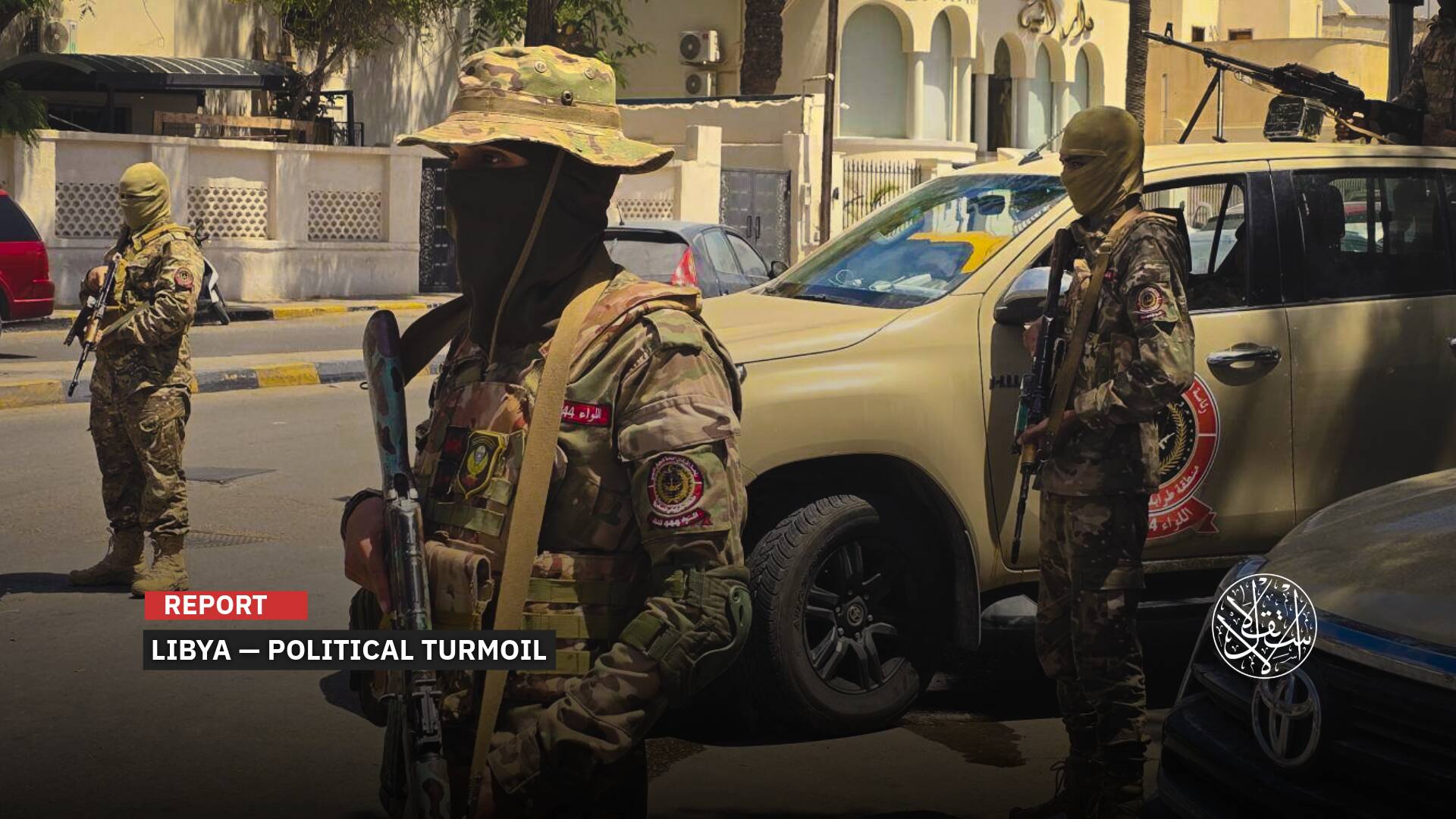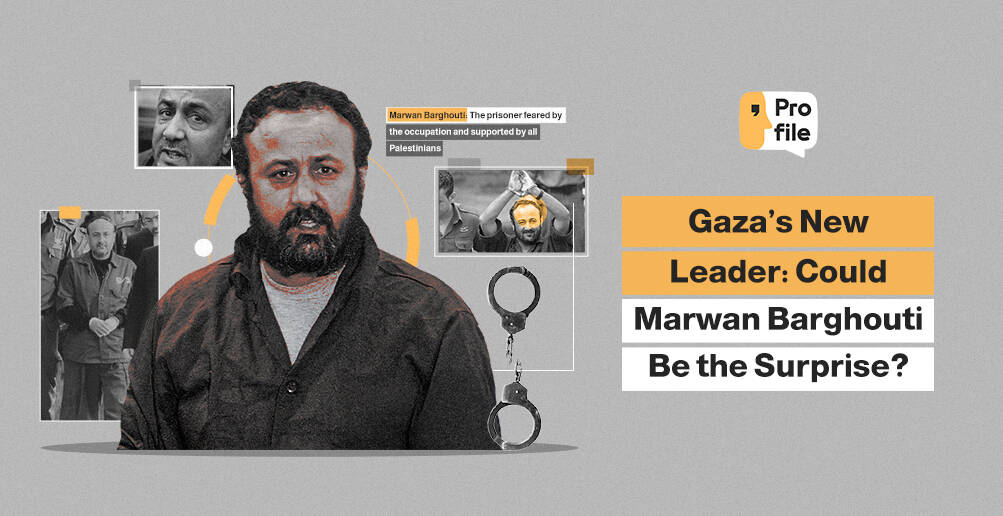Suicide Drones: A New Weapon Deployed by the Israeli Occupation for Assassinations in Gaza

Silently and without sound or light, they glide through the skies of Gaza, exploding in the homes of Palestinian resistance leaders and in missile and launcher factories, leaving behind massive destruction.
This is how Israeli suicide or kamikaze drones operated during the recent round of fighting, targeting the al-Quds Brigades, the military wing of the Islamic Jihad movement.
The Assassinations
The Israeli Occupation launched an aggression on Gaza, starting on May 9, 2023, with the deployment of suicide drones towards residential houses and apartments where al-Quds Brigades leaders and activists resided. The initial synchronized strikes claimed the lives of 13 individuals, including 3 leaders, along with children and women.
Among the casualties were the Southern Region Commander of the al-Quds Brigades, Jihad Ghanem, and his wife, as well as Tariq Ezzedine, the al-Quds Brigades leader from the West Bank who was released as a prisoner in 2011 and later expelled to Gaza.
Khalil al-Bahtini, a member of the al-Quds Brigades’ military council and the Northern Region Commander in Gaza, also lost his life in the same coordinated strikes carried out by the suicide drones.
تغطية صحفية: "بقايا طائرة انتحارية استخدمها الاحتلال لاغتيال أحد قادة الســـرايـــا في قطاع غزة، فجر اليوم". pic.twitter.com/cicDHnyFSo
— وكالة شهاب للأنباء (@ShehabAgency) May 9, 2023
The member of the military council and the commander of the Rocket Unit in the al-Quds Brigades, Ali Ghali, was killed in the early hours of May 11, 2023, as his apartment in the city of Hamad, located in the southern part of the Gaza Strip, was targeted by a suicide drone. The Israeli Occupation accuses him of being responsible for issuing missile launch orders.
Following the assassination of the Rocket Unit commander in the al-Quds Brigades, the Israeli Occupation also targeted his deputy, Ahmed Abu Daka, who was one of the prominent leaders in the military wing of the Islamic Jihad movement.
This operation took place by targeting the house where he was taking refuge using a suicide drone on the afternoon of May 11 in Khan Yunis City.
Israeli Prime Minister Benjamin Netanyahu took the opportunity to boast about the elimination of both Ali Ghali and Ahmed Abu Daka, describing them as the commander in the leadership of the Rocket Unit of the Islamic Jihad, responsible for missile launches.
الجيش الإسرائيلي ينشر فيديو عملية الاغتيال في خانيونس قبل قليل.
— Hanzala (@Hanzpal2) May 11, 2023
الشهيد هو نائب قائد الوحدة الصاروخية pic.twitter.com/NmyaYEtHj6
Similarly, the Israeli Occupation forces assassinated a member of the military council of the al-Quds Brigades, as well as the operations officer, Iyad al-Hasani, along with one of his assistants, on the evening of May 12.
This was carried out through a suicide drone that targeted a residential apartment where they were located in the Nasser neighborhood, northwest of Gaza City.
A Series of Attacks
The first use of suicide drones by the Israeli Occupation forces in the besieged Gaza Strip dates back to November 12, 2019.
At that time, the overall commander of the al-Quds Brigades in Gaza, Baha Abu al-Ata, was assassinated in his home located in the Shuja’iyya neighborhood through a suicide drone that entered through a window, resulting in his martyrdom; his wife was also killed.
According to Palestinian sources, it has been disclosed that the drone used in the targeted assassination was a miniature suicide drone, with remnants discovered at the site of the operation. The drone’s involvement sheds light on the sophistication and precision of the attack.
In March 2021, the Ministry of Interior in Gaza seized a suicide quadcopter drone belonging to the Israeli army, which had fallen into the sea and was captured by fishermen.
Another drone exploded among a group of Palestinian fishermen off the coast of Khan Yunis city in the southern Gaza Strip after getting entangled in their fishing nets, resulting in the martyrdom of three fishermen.
Israeli Channel 12 reported that the two drones fell during a military operation by the Israeli Navy, targeting a boat three weeks before the martyrdom of the fishermen.
The Israeli army spokesperson announced in February 2021 the foiling of a potential threat off the southern coast of the Gaza Strip.

The West Bank was not exempt from the use of suicide drones, as they were employed on October 25, 2022, in the assassination of Wadee al-Houh, a commander in the Lion’s Den groups operating in the city of Nablus, northern West Bank.
Witnesses accompanying the martyr reported that small drones carrying explosive charges and surveillance cameras pursued the martyr inside the house where he was taking refuge after being besieged by Israeli special forces.
Some of these drones would explode to create openings in windows or walls, allowing other drones to pass through and target him.
Activists’ cameras in the West Bank documented the flight of suicide drones over the houses of those being pursued during Israeli incursions, especially in the skies of Jenin, where military groups operate that impede Israeli forces’ invasions. These groups have previously inflicted losses on Israeli soldiers’ lives during clashes.
#شاهد طائرة انتحارية وطائرات تصوير أعلى المنزل المحاصر في أطراف مخيم جنين مع استمرار الاشتباكات بين المحاصرين وجيش الاحتلال pic.twitter.com/zG1H7XvPn6
— Newpress | نيو برس (@NewpressPs) March 7, 2023
The Israeli army announced the use of suicide drones on July 20, 2022, after lifting the Israeli military’s control, which had imposed a ban on their operations. It officially admitted, for the first time, that it had used this type of drone.
According to Channel 13, the Israeli army carried out suicide drone attacks during the aggression on Gaza in May 2021, claiming that some drones discovered and destroyed rocket launchers belonging to the Islamic Resistance Movement, Hamas.
The recent round of attacks in Gaza marked the largest deployment of these suicide drones by the Israeli Occupation forces.
Why Using Such Drones?
The political analyst and Israeli affairs writer, Fayez Abu Shamala, stated that “Israel” is developing unmanned aerial vehicles and utilizing them to target resistance forces inside Palestine and external threats, including suicide drones.
He stated in an interview with Al-Estiklal that the use of suicide drones was not new during the recent escalation but had been previously used against a precision missile factory belonging to the Lebanese Hezbollah in the southern suburbs in 2019.
The writer explained that the Israeli Occupation’s use of these drones aims to achieve the element of “surprise” against the resistance and undermine the morale of the fighters.
He believes that they have succeeded in achieving their goals. He further explained that drones differ from the missiles typically used by the people of Gaza, which are preceded by loud flights of warplanes, alerting the resistance fighters.
Drones also offer flexibility in executing the mission, allowing for adjustments in case of any malfunctions or changes in the plan, which is not possible with warplane missiles. The Israeli military claims that drones can accurately hit designated targets.
Abu Shamala pointed out that “Israel” has developed various types of drones of different sizes and specifications to reduce human involvement in aviation, especially in airspace controlled by countries like Iran, which possess advanced air defense systems.
He clarified that “Israel” has produced suicide drones and robots to attack resistance tunnels in Gaza, infiltrate them, capture footage from inside, and then detonate them either from the depths or at the tunnel’s opening.
Palestinian researcher, Zakaria al-Salalah, stated that the Israeli army used suicide drones during the recent aggression on the Gaza Strip to carry out successful assassination operations.
He said in an interview with Al-Estiklal that drones are the primary weapon used by the Israeli Occupation against Palestinians, whether in offensive or reconnaissance operations, including the use of suicide drones.
The researcher mentioned that the Israeli Occupation resorts to these types of assassination operations to avoid the resistance from detecting its targets.
The resistance has the technological capability to detect drones in the skies of the Gaza Strip and determine whether they are armed or used for reconnaissance and their flight locations.
However, with small suicide drones that enter from uninhabited areas and fly near the ground, it becomes difficult for the resistance to detect such information, allowing the Israeli Occupation to successfully carry out assassination operations.
Al-Salalah explained that the upcoming battles between the Israeli Occupation and the resistance will increasingly rely on the use of drones as a weapon.
Saeed Bisharat, an expert in Israeli affairs, stated that the Israeli Occupation has developed drones and suicide drones over the past few years for the purpose of assassinations.
He mentioned in an interview with Al-Estiklal that these drones possess significant military capabilities, accurately hitting targets. Some of them can reach the target silently, like quadcopter drones, which the Israeli army heavily relies on in special operations and assassinations.
Bisharat clarified that the Israeli army has trained crews to manage and accurately guide swarms of suicide drones toward targets.
Basharat explained that these aircraft possess significant military capabilities, accurately hitting targets with extreme precision.
Some of them can reach their targets silently, like quadcopter drones. The Israeli army heavily relies on them in special operations and assassinations.
He pointed out that the Israeli army is currently working on developing a system to operate and control a group of drones simultaneously. This system aims to control swarms of suicide and reconnaissance drones.
The Israeli army relies on LANIUS, a small-sized suicide drone currently being produced by the Israeli company Elbit Systems.
It is designed for combat in residential areas, with the ability to infiltrate houses and tunnels, gather intelligence information, and strike and detonate the target.
“The speed of the aircraft reaches 20 meters per second, and it possesses portable recording devices. It can carry explosives and activate the explosion either through a human operator or autonomously.”
The specialist explained that the drone is equipped with a GPS system, artificial intelligence technologies, and a unique ability to generate a three-dimensional map of the environment in which it flies. The aircraft carries cameras and sensing devices.
Types of Suicide Drones
“Israel” was the first to manufacture suicide drones in 2008, with its initial aircraft named “Harop.”
The mentioned aircraft operates through an advanced radar system that detects its target and engages it by directly descending upon it, exploding and destroying it.
It can fly for 6 hours in the air, covering a distance of 100 kilometers. The cost of each drone amounts to approximately one million dollars.
The Harop drone is designed by Israel Aerospace Industries (IAI) and produced by the Israeli Air Force’s affiliated company, Israel Aircraft Industries.

Israel possesses a variety of suicide drones today, some of which are publicly known while others remain under military control.
Israeli manufacturing companies of drones publish information about their aircraft and military capabilities on their official websites, subject to the approval of the Israeli military censor for any information to be released.
One of the prominent types of Israeli drones is Elbit Systems’ SkyStriker (Hebrew: Shrekarek) suicide aircraft which carries a warhead weighing 5 or 10 kilograms fixed inside the aircraft’s body, enabling high-precision target strikes.
The electric propulsion system minimizes noise, allowing for stealth operations at low altitudes, acting as a silent, invisible, and sudden attacker, as reported by the Israel Aircraft Industries website.
Another suicide drone is the Switchblade 600 aircraft, an explosive aerial weapon launched from a compressed gas tube.
It features an electro-optical system and an infrared camera, capable of flying up to 80 kilometers and remaining in the air for over 40 minutes. There is also a smaller version called the Switchblade 300 suicide drone, according to the same source.
The Israeli Occupation also utilizes the Rotem suicide drone, which is a small-sized drone controlled by a single operator through a tablet device.
It takes off vertically and can enter through windows and doors to engage the target. It carries two bombs, each weighing approximately 2 kilograms, in addition to a warhead weighing half a kilogram, as reported by the Israeli Aircraft Industries website.
Additionally, the Israeli Occupation employs the Orbiter 1K suicide drone. It is modified to carry a 2-kilogram explosive charge, along with a 3-kilogram warhead, enabling it to carry out suicide missions.
It excels in attacking lightly armored targets and human targets and is controlled by the operator, allowing it to reach a specific point after receiving the required information and independently carry out area scanning to detect and destroy a stationary or moving target.
According to the Israeli website, Walla, the most prominent aircraft used in targeted assassinations in Gaza and the West Bank is the quadcopter suicide drone.
It belongs to the category of vertical aircraft, distinguishing it from its fixed-wing counterparts, as it ascends and flies in the air using 4 or 6 horizontal fans.
The quadcopter has a significant capability for aerial maneuvers and is among the most prominent aircraft used for surveillance, search, and assassination operations worldwide. It can carry explosives weighing 10–15 kilograms.
Sources
- For the first time, Israel admits the use of "suicide drones" in the war on Gaza [Arabic]
- Two martyrs in the targeting of an Israeli suicide drones towards a residential apartment in Gaza [Arabic]
- Did the Israeli Occupation use “suicide drones” to target Wadee al-Houh?! [Arabic]
- Israel Defense
- Israel Aerospace Industries










